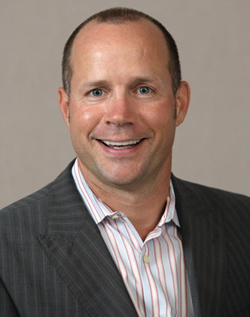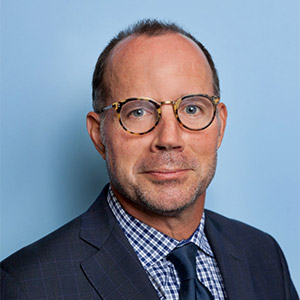Will the Bailout Work?
Five changes the Fed needs to make

The financial earthquake our economy has experienced over the last year was not an act of nature — it was man-made. Excessive risk was taken at the expense of shareholders, and now, taxpayers.
The proposed $700 billion bailout plan that Congress will decide on should not be approved unless this bill includes clear structural changes and requirements for tighter Federal Reserve Bank regulatory oversight and controls. The following are five critical areas that need to be enhanced:
1. The Federal Reserve Bank needs to hire more specialized bank examiners, provide better training, and establish adequate incentives so the best will be encouraged to stay.
The financial industry has changed dramatically with the rescue of Bear Stearns in March 2008, the bankruptcy of Lehman Brothers this month, and the takeover of Merrill Lynch by Bank of America. More recently, the Federal Reserve Bank issued an emergency approval to Goldman Sachs and Morgan Stanley, giving them commercial bank powers. These significant market changes dramatically increase the regulatory responsibility of the Federal Reserve Bank.
Unfortunately, the current examiner force is not yet prepared for this increased oversight responsibility. Congress needs to make sure that the Fed hires more specialized examiners and that they are provided specific training so they are ready to carry out the role of policing the risk-taking activities at these sophisticated financial institutions.
Investment banking activities are primarily fee- and trading profit–driven. As part of this business model, new and complicated products are constantly being created, packaged, and sold. In the past, Fed examiner staff have been challenged to understand the various products used as these risk-taking firms seek profit. If examiners are to be ahead of the regulatory curve, they will need to have adequate product knowledge and improved analytical skills. The current number and the skill level of bank examiners at the Federal Reserve are not adequate.
Training could be provided either through internally developed courses and a certification program developed by the Board of Governors or through approved third-party vendors. In addition, incentive systems need to be put in place to minimize the brain drain and give the best examiners financial encouragement.
2. The Fed needs to tighten regulation and leverage-ratio requirements of investment bank–related activities.
Financial theory teaches us that there is a direct relationship between leverage (debt) use and risk. With greater risk should come greater return — and the flip side to that coin is also greater potential loss.
The Federal Reserve Bank needs to reexamine what is considered a healthy level of leverage by stand-alone investment banks, as well as those commercial banks that own investment banking franchises. Many investment banks in recent years have maintained leverage ratios exceeding 20 to 25 times their capital. These new leverage ratio requirements should also have more weighting in the overall scoring process to discourage firms from using excessive leverage.
With investment banks such as Goldman Sachs and Morgan Stanley obtaining commercial banking powers, the Federal Reserve will also need to closely examine the traditionally more risky business practices of these entities to insure that such activities do not jeopardize the financial health of the overall commercial banking franchise.
3. The compensation schemes at commercial and stand-alone investment banks need to be reevaluated.
Firm-derived compensation systems can reinforce good as well as destructive behavior at the senior executive and middle executive levels. The Federal Reserve Bank needs to take a more active role in analyzing whether such incentive systems are positively aligned or whether they encourage excessive risk-taking by senior and middle management.
Although the power and responsibility of the Board to determine executive compensation schemes should remain, there needs to be great scrutiny over such programs to insure that they do not undermine the appropriate risk-taking balance within a company. The Fed’s expanded role would include collecting data, producing research, and establishing acceptable guidelines that Boards should strongly follow. Currently, the Fed does not closely evaluate executive compensation schemes or consider it an important component in the overall bank rating system.
4. The Fed needs to provide tighter regulation oversight on bank prime-broker operations.
Prime brokers are bankers to the hedge fund community. Through their lending policies and standards, they are gatekeepers that determine the level of leverage (debt) the industry is about to acquire.
While not all hedge funds use leverage strategies, the availability to leverage is determined by the willingness of prime brokers to lend — and with leverage can come increased risk and the potential for large losses. In August 2006, Amaranth, a Connecticut-based hedge fund, used large amounts of leverage, facilitated through a prime broker, and lost $6 billion in one week. The funds manager, Brian Hunter, took large concentration bets in the spread relationship in the natural gas market. It could be argued that if this firm did not have easy access to prime broker–provided leverage, it would not have experienced such a significant financial loss.
Currently, the number of hedge funds in the United States exceeds 6,500. Numerous commercial and investment banks, including J. P. Morgan, Goldman Sachs, and Morgan Stanley, also run internal hedge funds that control over $1 trillion. More than half of these funds are run out of the New York and Connecticut metro area. As a result, the Federal Reserve Bank district of New York especially will need to strengthen its expertise in the examination of hedge funds. This is especially the case given that two of the larger hedge fund managers, Goldman Sachs and Morgan Stanley, just received commercial banking powers.
Prime brokers should be regulated with the focus on keeping a required capital reserve, including a certain minimum regulatory capital amount. Lending standards used should also be evaluated and reviewed by bank examiners to insure that they are not putting undue risk on their firms. By enhancing the regulator oversight of prime brokers and insuring sound lending practices, this will better control the amount of leverage risk that can creep into the financial system.
5. A credit default swap (CDS) exchange must be created. Preemptive measures need to be taken, as the CDS market is a large and growing new financial storm on the horizon.
Although we do not know yet the full extent of the fallout, Lehman’s bankruptcy points out one of the weaknesses of the existing CDS market: there is not a standardized exchange or clearing mechanism that can protect against credit risk of various participants.
A CDS is used for two purposes; either as a hedge against credit default risk or for pure speculation. The market makers for these instruments include many of the larger commercial banks such as J. P. Morgan and Deutsche Bank, as well as investment banking firms Goldman Sachs and Morgan Stanley. Trading is done as a one-off, and not on a formalized exchange that can monitor credit quality of participants in a consistent manner. As a result, there is credit risk in this segment of the market.
CDSs insure against the event of default, and their notional value can be many times that of the underlying corporate bonds they insure. The real and pending danger to the financial systems is when a CDS seller is unable to honor an obligation to pay on this derivatives contract.
In the last decade, this segment of the financial market has grown rapidly, to over $44 trillion, but there is no standardized exchange to clear these contracts. As a result, the financial market is subject to individual counterparty risks from each of these sellers. Should one of the big sellers of these contracts go into bankruptcy, this credit event could trigger a systemic impact on the financial markets and the overall economy.
One way to minimize the impact of such a credit event is to create a CDS Exchange that would require all participants to demonstrate creditworthiness. Participants then would be required to post collateral as credit quality declined. With this posting process, initial margins as well as maintenance margins would help protect the overall market from an individual, or multiple, CDS participant default.
Mark Williams is executive-in-residence at the School of Management and a former Federal Reserve Bank examiner.

Comments & Discussion
Boston University moderates comments to facilitate an informed, substantive, civil conversation. Abusive, profane, self-promotional, misleading, incoherent or off-topic comments will be rejected. Moderators are staffed during regular business hours (EST) and can only accept comments written in English. Statistics or facts must include a citation or a link to the citation.